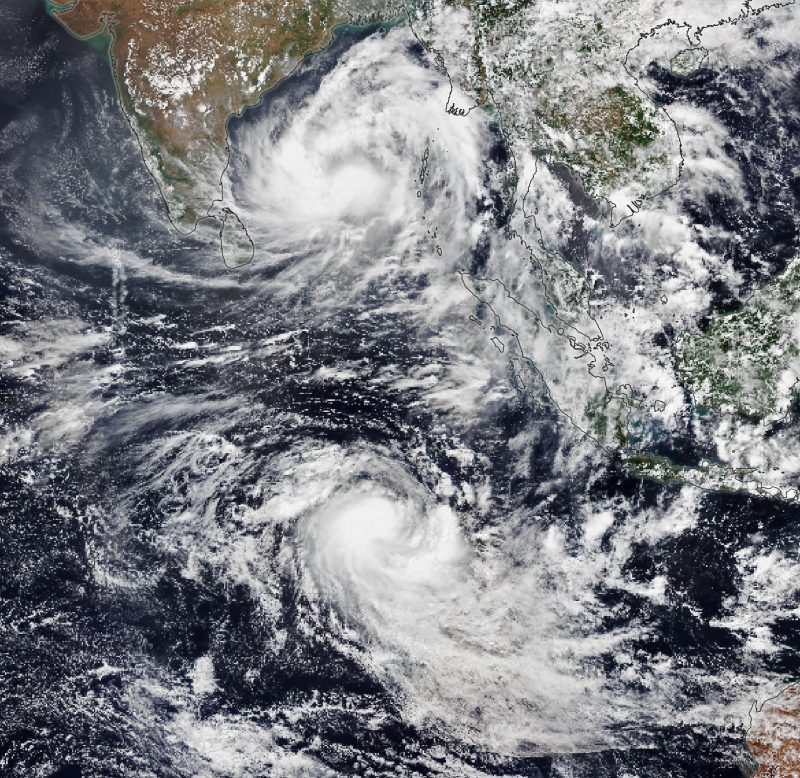
A pair of cyclones are swirling in the Indian Ocean on either side of the equator. As of May 10, 06:00 UTC, the tropical cyclone north of the equator – Asani – had wind speeds of 75 miles per hour (120 kph). The tropical cyclone south of the equator – Karim – had wind speeds of 70 miles per hour (113 kph). Thanks to the Coriolis effect, the two monster storms were spinning in opposite directions.
Twin cyclones show the Coriolis effect
In the Northern Hemisphere, storms such as cyclones have a spin or rotation that is counterclockwise. But in the Southern Hemisphere, storms tend to spin clockwise. Cyclones and other storms have very low pressure at their centers. Low pressure areas pull air in from higher pressure areas. Air traveling long distances on Earth does not travel in a straight line. Because of Earth’s rotation, in the northern half of the globe the air bends to the right. And in the southern half of the globe the air bends to the left.
The Coriolis effect works on other planets as well. The swirls and eddies in Jupiter’s atmosphere, including the Great Red Spot, also feel the Coriolis effect.
Asani and Karim
The twin cyclones in the Indian Ocean are weakening. Asani has been heading west-northwest across the Bay of Bengal. Fortunately, most of its activities have been offshore, but it may bring heavy rain to central eastern India. Karim is mostly over open water west of Australia. While Karim was once the equivalent of a category 1 hurricane, it has weakened into a tropical storm.
TPW imagery from polar-orbiting ??shows how the #Coriolis Effect influences rotation on opposite sides of the equator. Note how #Asani spins counter-clockwise in the northern hemisphere and #Karim spins clockwise in the southern hemisphere. Pretty cool! https://t.co/kEKAiPuJFz pic.twitter.com/C88qZz6yK3
— UW-Madison CIMSS (@UWCIMSS) May 9, 2022
Bottom line: Twin cyclones Asani and Karim swirled in opposite directions on each side of the equator in the Indian Ocean.
The post Twin cyclones mirror each other in Indian Ocean first appeared on EarthSky.
0 Commentaires